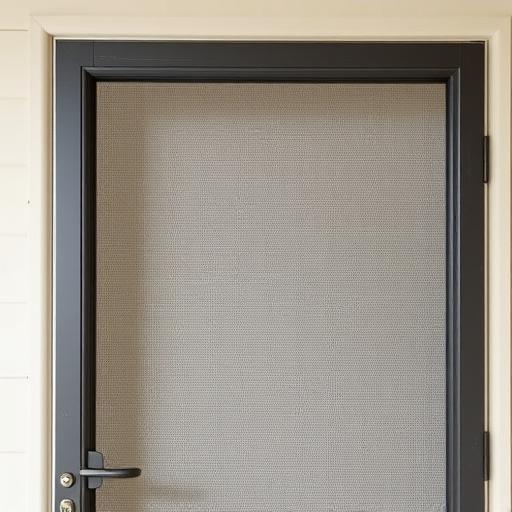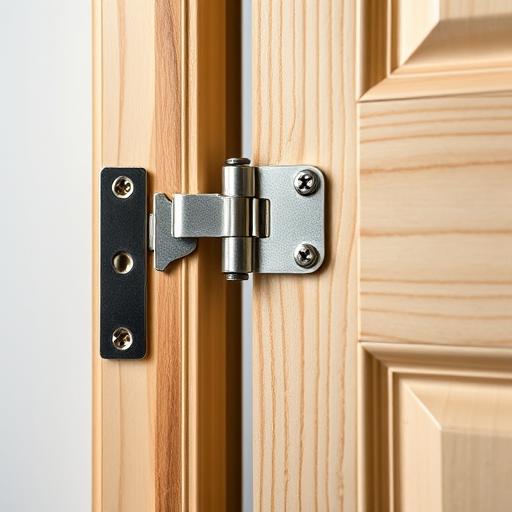How to Cover Drill Holes on Screen Door Frame
Drill holes on a screen door frame might seem like a minor issue, but leaving them uncovered can lead to bigger problems. Whether they’re from hardware installation, previous damage, or DIY projects, these holes can compromise the door’s appearance, security, and even its ability to keep out drafts, pests, and moisture. Fortunately, covering drill holes is a simple yet effective task that can restore your door’s functionality and aesthetic appeal. In this guide, we’ll walk you through the best materials and methods to tackle this common issue, ensuring a professional and lasting finish.
Step-by-Step Process
Clean the Area
Remove dust and debris from the drill holes.
Choose Filler Material
Select wood filler, epoxy, or caulk for the holes.
Apply Filler
Fill the holes with the chosen material using a putty knife.
Smooth the Surface
Sand the filled area until flush with the frame.
Paint or Seal
Match the frame's finish with paint or sealant.
Process infographic for How to Cover Drill Holes on Screen Door Frame
Why You Should Cover Drill Holes on a Screen Door Frame
Uncovered drill holes can create several problems for your screen door. They allow drafts to enter your home, increasing energy costs and making indoor spaces less comfortable. Additionally, small holes can become entry points for pests like insects or even rodents. Moisture can also seep into these openings, leading to rust on metal frames or wood rot on wooden ones. Beyond functionality, uncovered holes can make your door look unkempt and neglected. By addressing these holes, you not only improve the door’s appearance but also extend its lifespan and maintain its structural integrity.

Materials Needed for Covering Drill Holes
Before starting your repair, gather the necessary materials to ensure a smooth process. Here’s what you’ll need:
- Wood filler or putty
Methods to Cover Drill Holes on a Screen Door Frame
Using Wood Filler or Putty
Wood filler or putty is ideal for wooden screen door frames. It’s easy to apply and provides a durable finish.
Step-by-Step Application
Start by cleaning the holes with a damp cloth to remove dust and debris. Next, apply the filler using a putty knife, ensuring the hole is completely filled. Smooth the surface and let it dry according to the product instructions.

Sanding and Finishing
Once the filler is dry, use fine-grit sandpaper to smooth the area. If desired, apply paint or stain to match the door frame, blending the repair seamlessly with the surrounding surface.
Using Epoxy or Filler Paste
For metal or plastic frames, epoxy or filler paste is the best choice. These materials are strong and resistant to wear and tear.
Best for Metal or Plastic Frames
Select a filler that matches your frame’s material. Apply it with a small tool, smoothing the surface as you work. Allow the filler to cure fully before sanding it down for a flush finish.

Weatherproofing Considerations
Ensure the filler is water-resistant to protect against moisture. If necessary, seal the repaired area with a protective coating to enhance durability.
Replacing Hardware with Screws or Plugs
If the drill holes are from removed hardware, replacing them with screws or plugs can be a practical solution.
Matching Existing Hardware
Remove any old screws and clean the holes thoroughly. Insert new screws or dowel plugs to create a flush finish, ensuring the hardware matches the original design.
Alternative Solutions (Covers, Plates)
For larger holes or a decorative touch, consider using covers or plates. These can hide the holes while adding a stylish element to your door frame.
Additional Tips for a Professional Finish
To achieve a polished look, use color-matching spray paint to blend the repaired area with the rest of the door. Apply a clear sealant to protect the repair from weather damage. After completing the repair, check for drafts and use caulk to seal any gaps if necessary.
Conclusion
Covering drill holes on a screen door frame is a simple yet impactful task that enhances both the appearance and functionality of your door. Whether you use wood filler, epoxy, or hardware replacements, the right method depends on your door’s material and the size of the holes. Always test your chosen solution on a small area before applying it fully. With these steps, you’ll have a professional-looking repair that keeps your door in top condition for years to come.
FAQs
Can I use caulk to cover drill holes?
Caulk can work for small gaps but may not be durable for larger holes. Use filler for structural repairs.
How do I match the paint after filling the holes?
Use a small brush for precise touch-ups or apply a light coat of matching spray paint.
What if the drill holes are rusted?
Clean rust with sandpaper or wire brush before applying filler to prevent further corrosion.
Should I remove the screen door to fix the frame?
It’s easier to work on the frame if the door is removed, but smaller repairs can be done in place.
How long does filler take to dry before sanding?
Most wood fillers dry in 1-2 hours, but check the product instructions for exact curing time.







